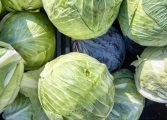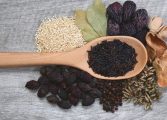Vegan Dessert: A Comprehensive Guide to Delicious Plant-Based Sweets

Introduction
Vegan dessert has gained immense popularity in recent years as more people adopt plant-based lifestyles. These desserts offer a cruelty-free alternative to traditional sweets and are often healthier, environmentally friendly, and equally delicious. In this article, we will provide an in-depth overview of vegan desserts, exploring their various types, popular choices, quantitative measurements, differences between them, as well as their historical advantages and disadvantages. Join us on this delectable journey into the world of vegan desserts.
Understanding Vegan Desserts

Vegan desserts are sweet treats that don’t contain any animal-based ingredients such as eggs, dairy products, honey, or gelatin. Instead, they rely on plant-based alternatives to achieve the desired texture, flavor, and consistency. These desserts emphasize the use of natural ingredients like fruits, nuts, seeds, and plant-based milk alternatives. Vegan desserts can range from simple classics to innovative creations, making them suitable for both beginners and experienced bakers alike.
Exploring the Types and Popularity of Vegan Desserts
1. Cakes and Cupcakes
Vegan cakes and cupcakes have become incredibly popular, with bakers recreating traditional recipes using substitutes like applesauce, mashed bananas, or flaxseeds to replace eggs. The selection of flavors, frostings, and toppings is endless, ensuring there’s a vegan cake for every taste.
2. Cookies and Brownies
Vegan cookies and brownies are beloved treats that can be enjoyed by all, irrespective of dietary preferences. These desserts often use alternatives like almond butter or coconut oil to achieve a moist and chewy texture, while still delivering a rich and indulgent taste.
3. Ice Cream and Sorbet
While traditional ice cream relies heavily on dairy products, vegan alternatives have gained significant traction. Made from plant-based milk or cream substitutes, these frozen treats offer a creamy texture and a multitude of flavors. Sorbets, on the other hand, are fruit-based desserts that provide a refreshing and lighter option.
4. Pies and Tarts
Vegan pies and tarts showcase the versatility of plant-based ingredients. From luscious fruit-filled pies to creamy chocolate tarts, these desserts make a delightful addition to any menu. Nuts, tofu, and coconut cream are often used to create the rich and velvety fillings.
5. Puddings and Mousses
Vegan puddings and mousses rely on ingredients like avocado, silken tofu, or chia seeds to achieve a smooth and creamy consistency. These desserts can be flavored with cocoa, fruits, or spices, appealing to a wide range of taste preferences.
Quantitative Measurements in Vegan Desserts
When it comes to measuring ingredients for vegan desserts, it’s useful to understand key substitutes commonly used in place of animal-based products. Here are some common replacements:
1. Egg Replacements
Flaxseeds, applesauce, mashed bananas, or silken tofu can be used as alternatives for eggs. These provide moisture, binding properties, and sometimes leavening effects.
2. Milk Substitutes
Plant-based milk alternatives like almond milk, soy milk, or oat milk can be used in place of dairy milk. Each option adds its unique flavor profile and texture to the dessert.
3. Butter Replacements
Coconut oil, vegan margarine, or nut butters are often used as replacements for butter. These alternatives add richness and contribute to the desired consistency.
4. Sweeteners
Common substitutes for white sugar include maple syrup, agave nectar, coconut sugar, or dates. These natural sweeteners lend their unique flavors to vegan desserts.
Exploring Differences Between Various Vegan Desserts
Vegan desserts can differ in several aspects, including:
1. Texture and Consistency
Some vegan desserts, like mousse and pudding, have a smooth and velvety texture, while others, such as cookies or pies, have a crumbly and firm consistency. Recognizing the variations in texture allows for better understanding and preparation.
2. Flavor Profiles
From fruity and tangy to rich and decadent, vegan desserts encompass a wide range of flavors. It’s important to differentiate between desserts that highlight fresh fruits and those that indulge in chocolate or caramel undertones.
3. Nutritional Content
Vegan desserts often offer a healthier alternative, using wholesome ingredients rich in fiber, minerals, and antioxidants. Understanding the nutritional benefits can aid in making informed choices.
A Historical Perspective on the Advantages and Disadvantages of Vegan Desserts
In recent years, vegan desserts have become more accessible and gained widespread popularity due to various advantages, including:
1. Ethical Considerations
Vegan desserts are created without exploiting animals, aligning with the principles of animal welfare and cruelty-free living.
2. Health Benefits
Many vegan desserts incorporate nutrient-rich ingredients, offering health benefits such as reduced cholesterol levels, lower saturated fats, and increased fiber intake.
However, it’s important to note some limitations or potential disadvantages:
1. Ingredient Availability
Certain plant-based alternatives, especially specialty items, may be harder to find or more expensive in some regions.
2. Learning Curve
Baking vegan desserts often requires adapting traditional recipes and learning new techniques to achieve the desired taste and texture.
Conclusion
Vegan desserts have evolved into a creative and delectable realm of culinary delights. Whether it’s a decadent chocolate cake or a refreshing fruit sorbet, these plant-based treats offer a guilt-free indulgence. By exploring the various types, popularity, quantitative measurements, differences, and historical aspects of vegan desserts, we hope to inspire both new and seasoned food enthusiasts to embrace the delicious world of vegan desserts. So grab your apron, gather your ingredients, and embark on an exciting journey into the realm of plant-based sweet treats. Enjoy!
















































